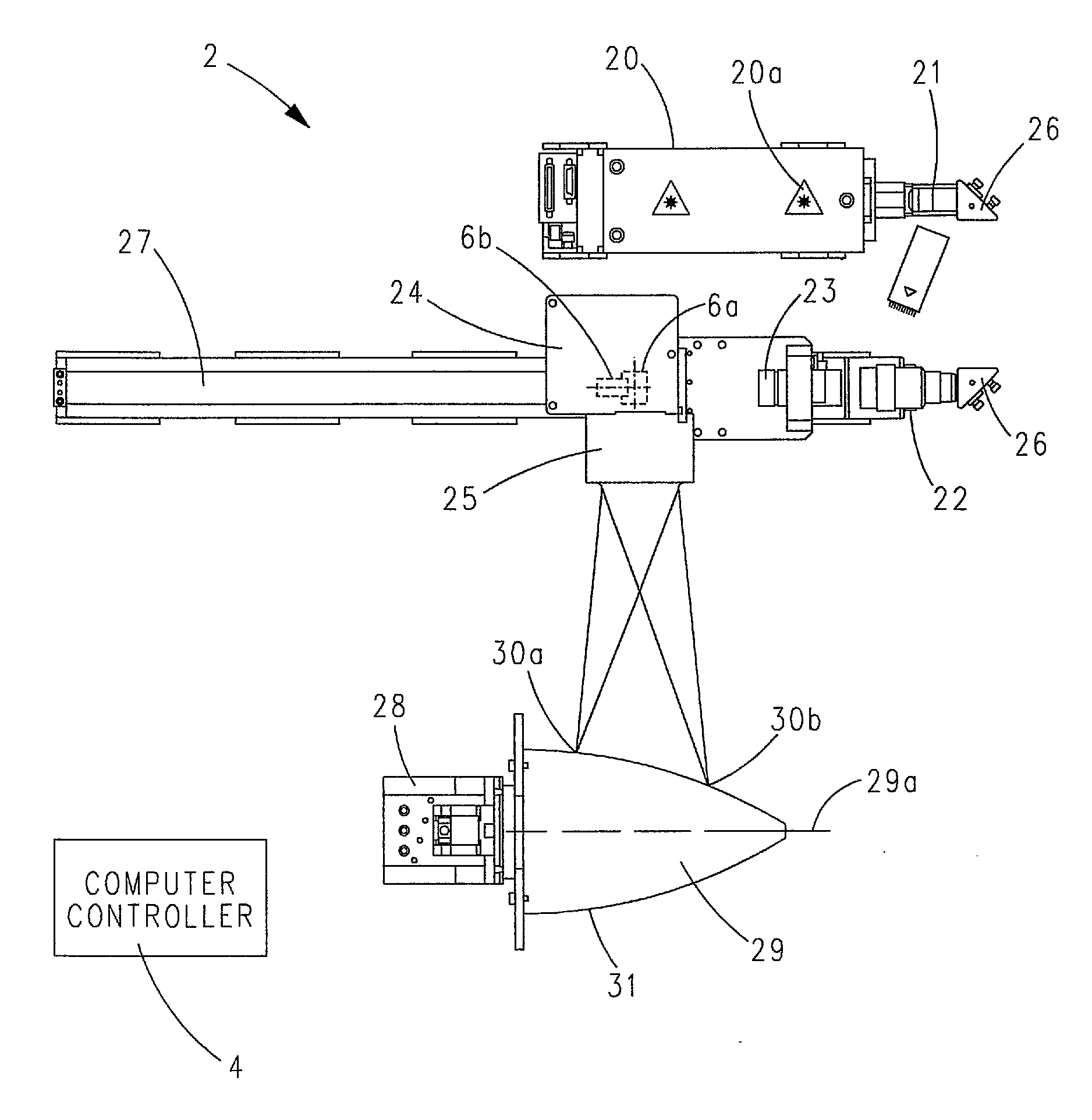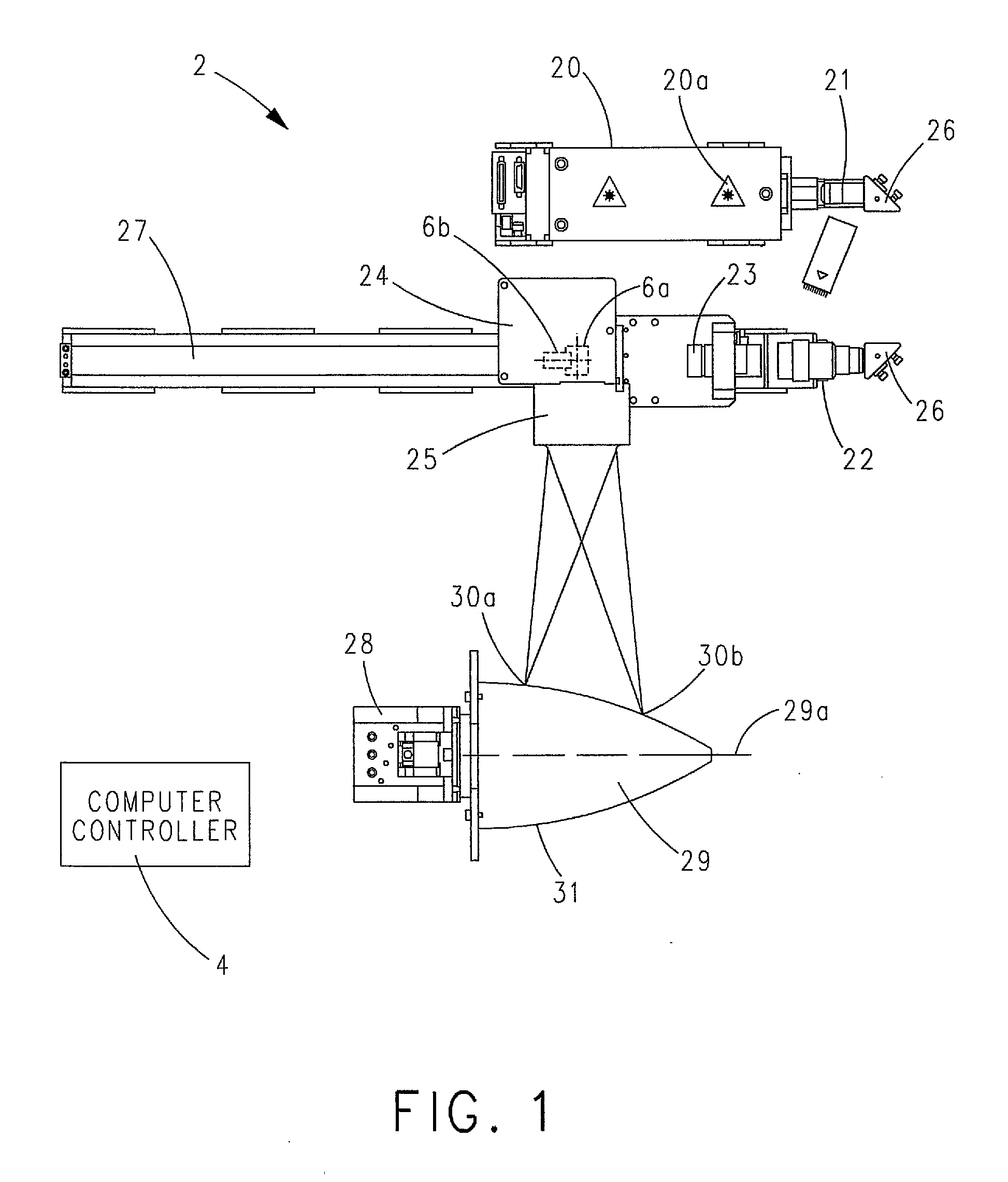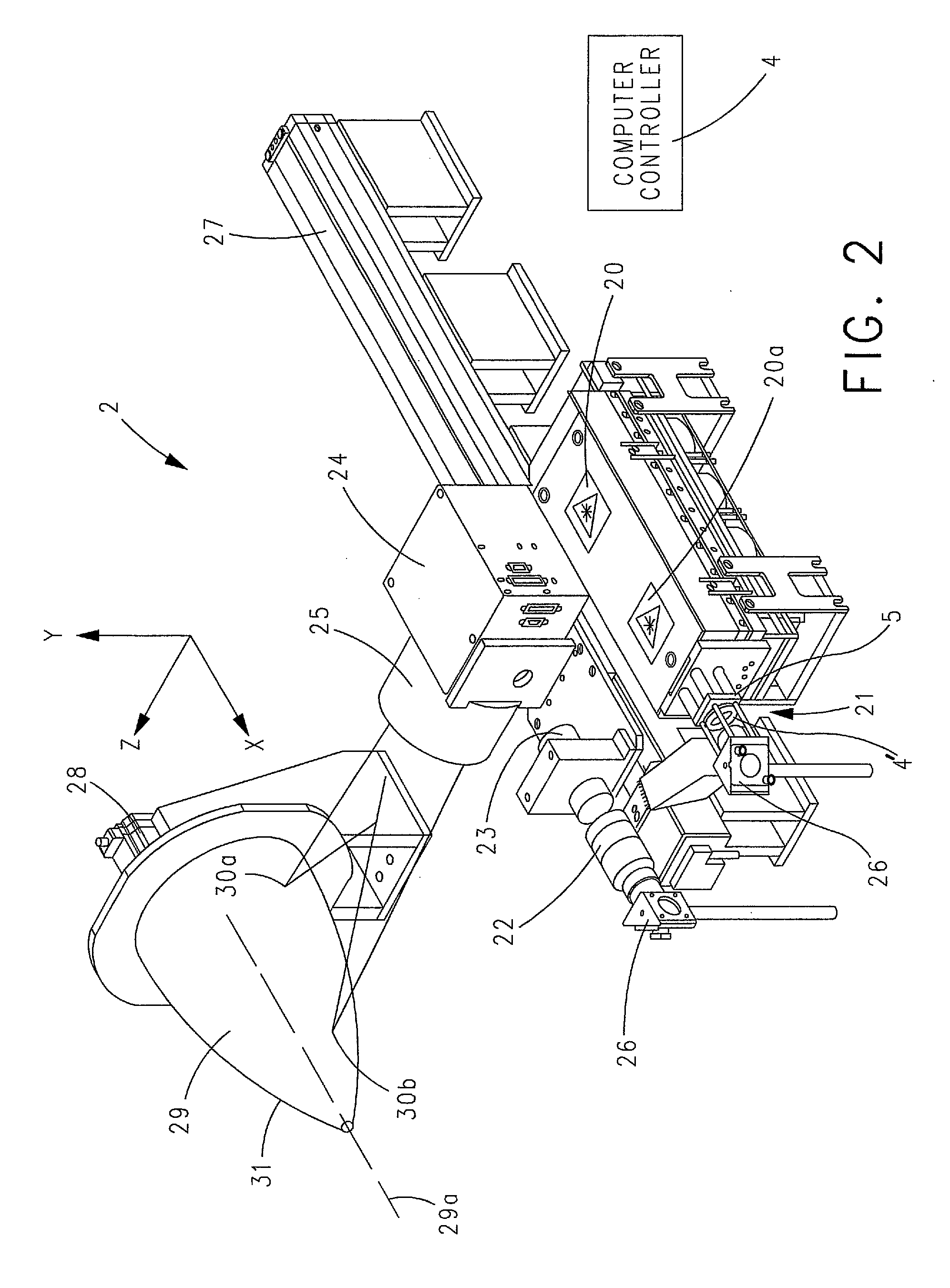Method of generating patterns on doubly-curved surfaces
a technology of doubly-curved surfaces and patterns, applied in the field of doubly-curved surfaces, can solve the problems of undesirable prior art of splicing flat sheets of etched conductors onto curved surfaces, difficulty in maintaining electrical conductivity across the surface, and difficulty in maintaining registration between layers, etc., to achieve rapid patterning of large areas, high speed, and high precision
- Summary
- Abstract
- Description
- Claims
- Application Information
AI Technical Summary
Benefits of technology
Problems solved by technology
Method used
Image
Examples
Embodiment Construction
[0039]The present invention will be described with reference to the accompanying figures where like reference numbers correspond to like elements.
[0040]FIGS. 1-2 depict a multi-axis direct write system or robot 2 capable of patterning a rotationally symmetric, ogive (doubly-curved) surface 29 of a substrate 31, e.g., a dielectric radome. As used herein, “doubly-curved” means a surface which from a point thereon has a first radius of curvature in one direction (e.g., an X direction) and a second radius of curvature in a second, orthogonal direction (e.g., a Y direction).
[0041]A flow chart of the light propagation through an optical system of system 2 (and system 2′ shown in FIGS. 3A-4B) is shown in FIG. 5. In an exemplary case, the dielectric being patterned is a high temperature ceramic composite with low dielectric constant and loss tangent.
[0042]System 2 includes a light source 20 which may be an incoherent broadband light source, such as an ultraviolet mercury arc lamp; a monochr...
PUM
| Property | Measurement | Unit |
|---|---|---|
| output wavelengths | aaaaa | aaaaa |
| output wavelengths | aaaaa | aaaaa |
| output wavelengths | aaaaa | aaaaa |
Abstract
Description
Claims
Application Information
 Login to View More
Login to View More - R&D
- Intellectual Property
- Life Sciences
- Materials
- Tech Scout
- Unparalleled Data Quality
- Higher Quality Content
- 60% Fewer Hallucinations
Browse by: Latest US Patents, China's latest patents, Technical Efficacy Thesaurus, Application Domain, Technology Topic, Popular Technical Reports.
© 2025 PatSnap. All rights reserved.Legal|Privacy policy|Modern Slavery Act Transparency Statement|Sitemap|About US| Contact US: help@patsnap.com



